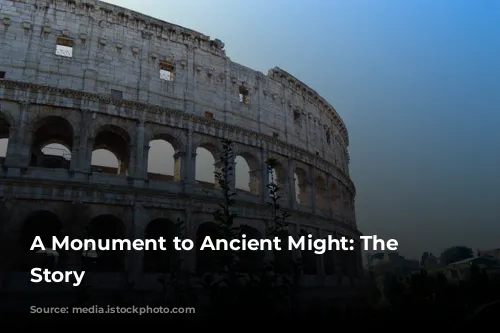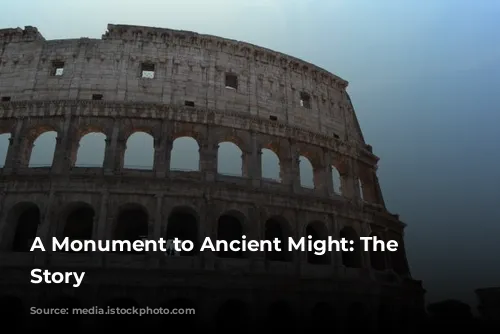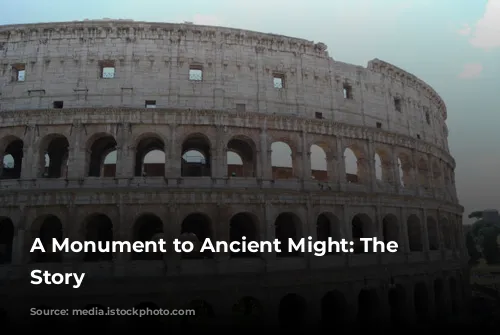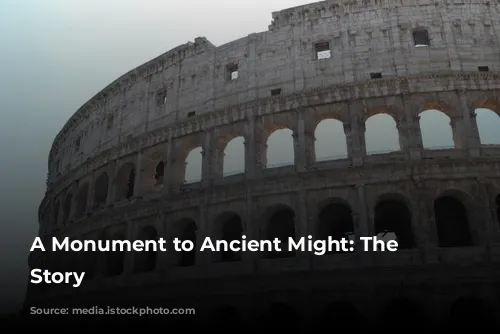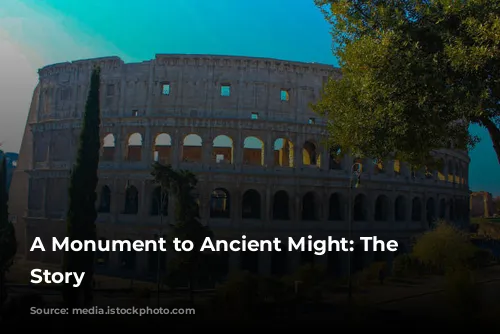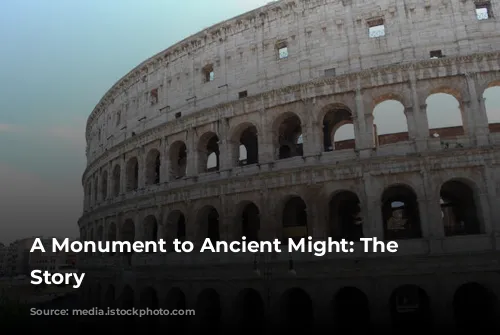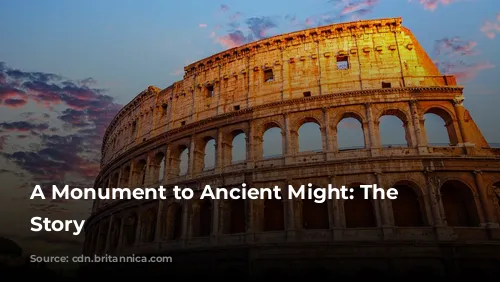The Colosseum, a majestic structure standing tall in the heart of Rome, is more than just a reminder of the Roman Empire’s glorious past. It is a testament to their remarkable architectural and engineering skills. This magnificent amphitheater, one of the few surviving structures from that era, draws millions of visitors every year, contributing significantly to Italy’s tourism revenue. In 2018, the Colosseum, Roman Forum, and Palatine Hill, collectively, earned over $63.3 million (€53.8 million), cementing their position as Italy’s most popular tourist attraction.
From Glory to Neglect and Back Again
While the Colosseum stands as a symbol of Roman grandeur today, its journey has been far from smooth. After the fall of the Western Roman Empire, the Colosseum fell into disrepair, becoming a mere shadow of its former glory. During the 12th century, the Frangipane and Annibaldi families, powerful families of the time, transformed the arena into their fortress. This was followed by a period of ruthless neglect, with Pope Alexander VI authorizing the use of the Colosseum as a quarry in the late 15th century. This destructive period continued for over a thousand years, leaving the once-proud structure deteriorated and barely recognizable. Thankfully, the 1990s marked a turning point, with state-funded restoration efforts finally bringing the Colosseum back to life.
A Monument to Entertainment
The Colosseum’s construction, beginning in 70 CE under the reign of Emperor Vespasian, was a grand project aimed at reviving Rome after a turbulent period. Like other amphitheaters, the Colosseum was envisioned as a center of entertainment, hosting a diverse range of events, from thrilling gladiator fights to spectacular animal hunts and even mock naval battles. This ambitious project was funded by the spoils of war, specifically the plunder from Titus’s conquest of Jerusalem in 70 CE. The very people who built this grand structure, however, were enslaved Jews from Judaea, highlighting the contradictions and complexities of the time.

A Monument to Skill and Scale
The Colosseum, also known as the Flavian Amphitheater, is a testament to the ingenuity of Roman engineering. This massive structure, elliptical in shape, stands four stories tall, built using a combination of stone, concrete, and tuff. The arena’s immense size, measuring 620 by 513 feet (189 by 156 meters), allowed it to hold as many as 50,000 spectators. The Colosseum’s primary purpose was gladiatorial combat, and its iconic presence continues to evoke images of these fierce battles.
A Monument to Imperial Power
The Colosseum’s location, just east of the Palatine Hill, was not merely a practical choice. It occupied the land previously used for Nero’s Golden House, specifically the artificial lake that was its centerpiece. By replacing the lake with a public amphitheater, Vespasian, a leader who rose to power through humble beginnings, symbolically asserted his authority and challenged the tyranny of his predecessor.
A Monument to Architectural Ingenuity
The Colosseum’s construction was a masterpiece of Roman architecture. Unlike previous amphitheaters, which relied on natural hillsides for support, the Colosseum was a freestanding structure, built with a complex system of vaults. The structure’s facade showcases the distinctive Doric, Ionic, and Corinthian orders, establishing a model that would later influence Renaissance architecture. The Colosseum’s construction was a testament to Roman engineering prowess, as it was the first freestanding amphitheater. The building’s construction was also remarkable for its use of concrete, a material that allowed for a more efficient and flexible design, making it possible to create a structure that was both massive and durable.
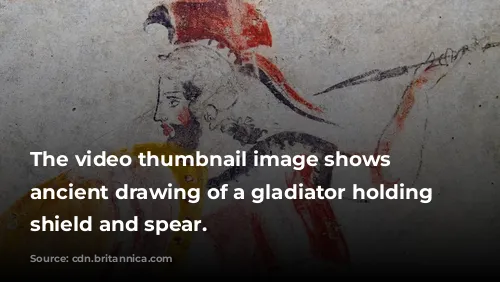
A Monument to a bygone Era
The Colosseum was not only a place of entertainment but also a symbol of Roman power and influence. Its imposing size, elaborate design, and the vast number of spectators it could accommodate reflected the grandeur of the Roman Empire. The Colosseum was the scene of numerous events, including gladiatorial combats, animal hunts, and even mock naval battles, all of which served to entertain and awe the Roman populace.
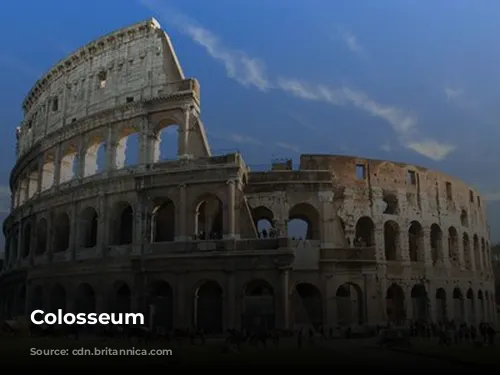
A Monument Restored
Although the Colosseum has endured periods of neglect and destruction, it has remarkably survived, thanks to the efforts of dedicated individuals and organizations. The Colosseum’s restoration in the 1990s was a monumental task that required extensive work, including structural repairs, cleaning, and the installation of modern safety features. This restoration effort has ensured that the Colosseum will continue to be a treasured landmark for generations to come.
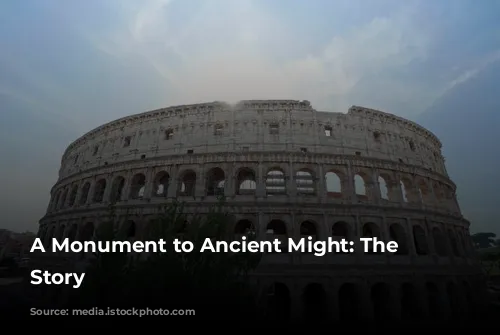
A Monument for the Future
The Colosseum, a symbol of ancient Rome’s power and resilience, stands as a reminder of the unforgettable impact of a once-mighty empire. It remains one of the most visited tourist attractions in the world, attracting millions of visitors each year. The Colosseum, along with the Roman Forum and Palatine Hill, is a must-see for any visitor to Rome. Its preservation and restoration efforts highlight the importance of safeguarding these historical treasures, allowing us to connect with the past and learn from the achievements of those who came before us.
